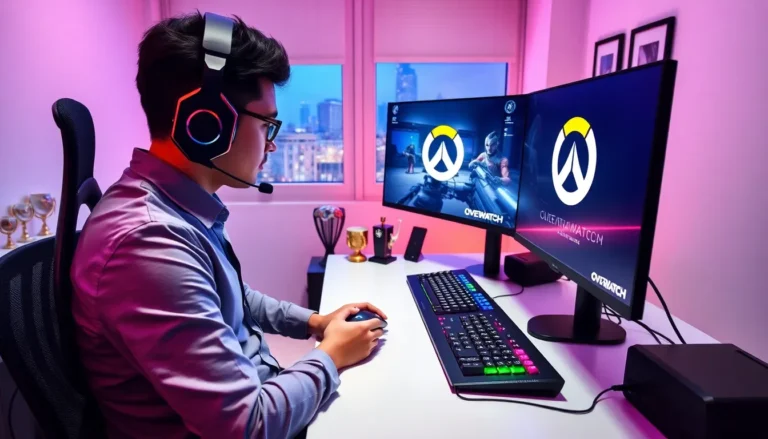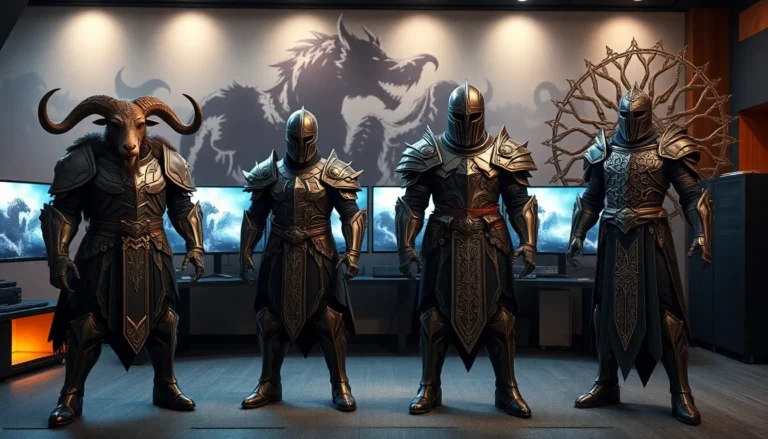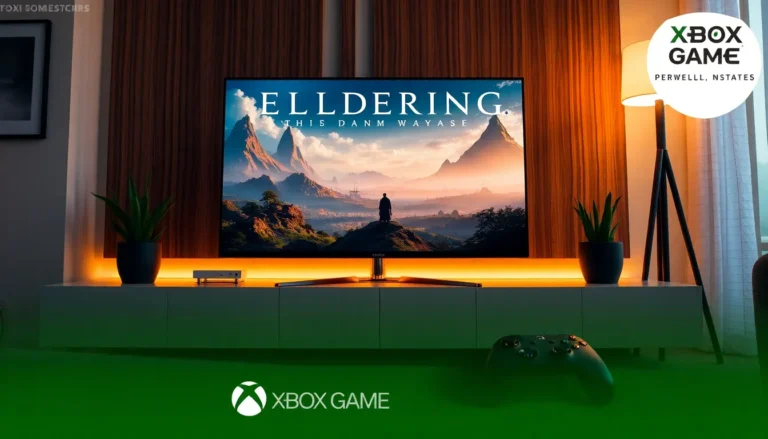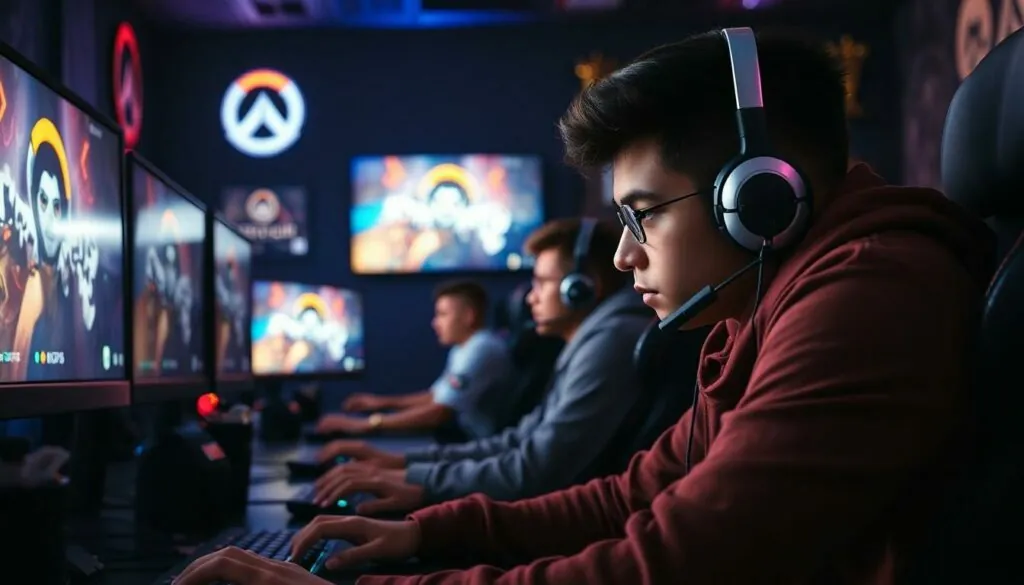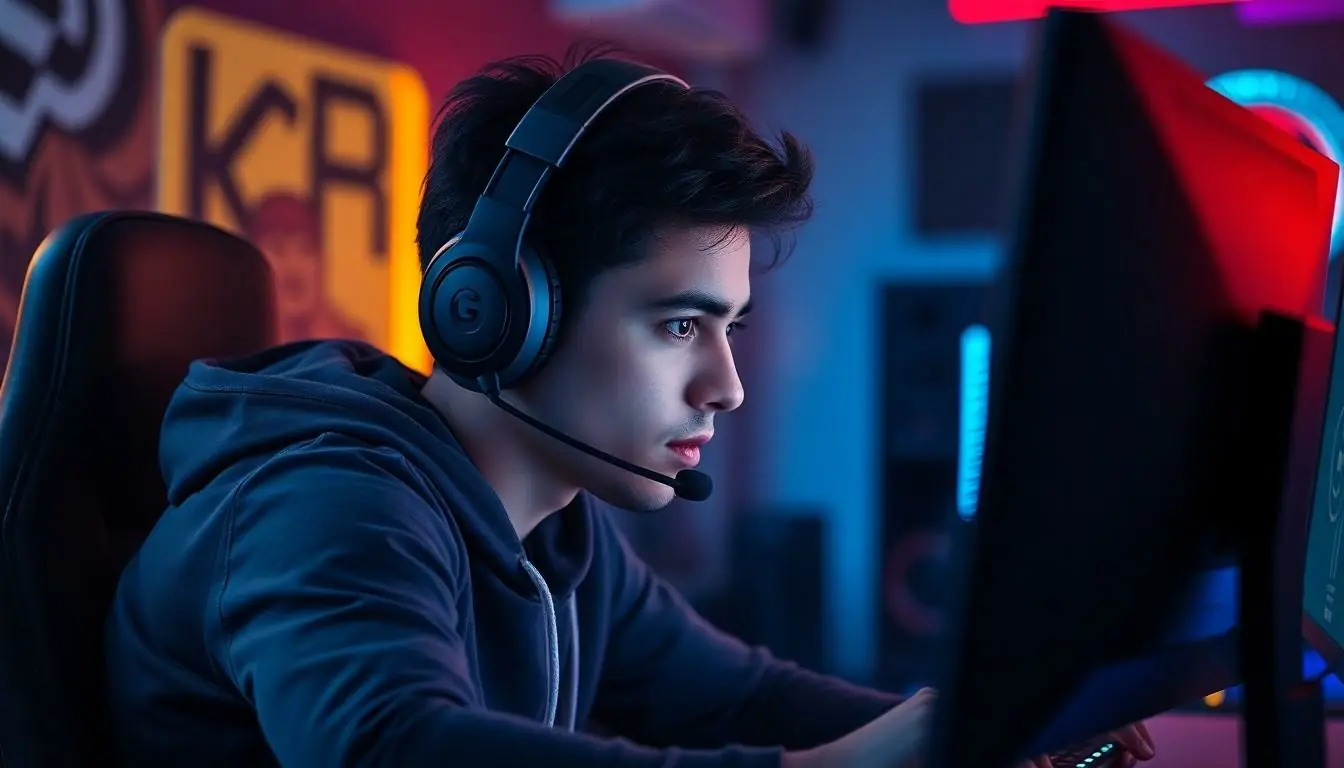Table of Contents
ToggleDiving into the world of Overwatch ranks is like stepping into a thrilling rollercoaster ride—full of twists, turns, and the occasional scream of frustration. Whether you’re a seasoned veteran or a fresh recruit, understanding the ranking system can make or break your gaming experience. It’s not just about the shiny badges; it’s about the pride of climbing that competitive ladder and proving you’ve got what it takes to be a hero.
Overview of Overwatch Ranks
The Overwatch ranking system consists of seven distinct tiers: Bronze, Silver, Gold, Platinum, Diamond, Master, and Grandmaster. Each tier represents varying skill levels in competitive play. Players progress through these ranks by accumulating Competitive Points based on their performance in matches.
Experiencing victories increases the chances of rising through the ranks, while losses may result in a drop. Every tier subdivides into five divisions, adding granularity and defining each player’s exact skill level. Achieving a competitive badge does more than display a rank; it signifies commitment to improving gameplay.
Bronze remains the starting point for many players, typically housing those who are newer or still grasping game mechanics. Silver players possess a basic understanding and demonstrate foundational skills. Gold players frequently show more refined play styles, while Platinum denotes a notable level of proficiency.
Diamond is where serious contenders make their mark. Players in this tier demonstrate exceptional teamwork and game awareness. Master moves the needle significantly, indicating advanced strategic thinking and individual skill. Grandmaster stands as the pinnacle of achievement in Overwatch, showcasing the best players who consistently perform at the highest levels.
Competitive seasons refresh ranks, allowing players to climb and fall based on performance over time. Understanding these ranks can guide players in setting realistic goals for self-improvement. Familiarity with each tier aids both seasoned players and newcomers in navigating the competitive landscape effectively.
Competitive Rank Structure
The Overwatch competitive rank structure consists of multiple tiers representing player skill levels. Each rank showcases distinct gameplay experiences and progression opportunities.
Bronze Rank
Bronze rank serves as the entry point for many new players. Typically, individuals here are still learning basic mechanics and strategies. Communication and teamwork often require improvement. Understanding character abilities and map layouts is crucial for growth at this level. Players frequently need guidance to enhance their decision-making skills. As players continue to practice, they begin to grasp the foundational elements of gameplay.
Silver Rank
Silver rank represents a step up from Bronze and shows that players possess a basic understanding of the game. Individuals at this level start to show improvement in mechanics and game sense. They often begin to realize the significance of teamwork and communication in competitions. Players may experience a mix of wins and losses, reflecting their inconsistent performance. As proficiency grows, players begin to explore different heroes and strategies more effectively.
Gold Rank
Gold rank indicates a more refined skill level where players know the game well. Frequently, individuals here exhibit strong mechanics and some strategic awareness. Winning games relies on effective coordination with teammates. Players often start focusing on hero synergies and counter-picks during matches. Improvement in positioning and decision-making becomes evident at this level. Practicing regularly helps players build confidence and mastery over their chosen heroes.
Platinum Rank
Platinum rank demonstrates considerable skill and understanding of game mechanics. Individuals in this tier possess enhanced teamwork and coordination abilities. Players frequently adapt their strategies based on opponents’ actions and approaches. Strong communication with teammates becomes vital for success in this level of competitive play. Players show greater adaptability with hero selections and often engage in detailed team strategies. Consistent practice and focus on advanced tactics lead to further growth and improvement.
Diamond Rank
Diamond rank signifies exceptional performance and mastery of game mechanics. Individuals here excel in teamwork and showcase excellent map awareness. Players often strategize, making calculated decisions while engaging in gameplay. Successful communication plays a pivotal role in winning matches at this level. Individuals frequently display proficiency with multiple heroes, increasing their adaptability during competitions. Continued practice ensures they stay competitive and enhance their gameplay experience.
Master Rank
Master rank represents a high level of skill with a deep understanding of game dynamics. Players at this level exhibit refined decision-making and exceptional teamwork abilities. Strategies often revolve around advanced tactics and precise execution, leading to a strong competitive advantage. Individuals show mastery of multiple heroes, often switching based on team needs. Communication among teammates becomes critical for securing victories. Consistent practice and analysis of gameplay contribute to their status.
Grandmaster Rank
Grandmaster rank showcases the best players in Overwatch, embodying excellence in skill and strategy. Individuals here consistently demonstrate superior game knowledge and mechanics. They excel in teamwork, frequently coordinating complex strategies with precision. Top players often maintain high win rates, reflecting their competitive advantage. Mastering various heroes allows them to adapt to different team compositions seamlessly. Engaging in frequent competitive matches helps maintain their top-tier status.
Top 500 Rank
Top 500 rank represents the pinnacle of Overwatch competition. This elite tier includes the absolute best players in the game, showcasing unmatched skill levels. Individuals here display consistent high-level performance and strategic insights. They often engage in practice with fellow top players to maintain their rank. Communication remains exceptional, enabling fluid teamwork in high-pressure situations. Continuous analysis of gameplay ensures they remain at the forefront of competitive play.
Rank Placement and Progression
Rank placement in Overwatch plays a crucial role in defining a player’s competitive experience. Players start each season with placement matches, typically comprising five games that determine their initial rank. Performance during these matches greatly influences the rank players receive, impacting their subsequent placement within the tiers.
Progression occurs through accumulating Competitive Points from match performance. Winning games increases a player’s skill rating, raising the chances of moving up. Conversely, losses can result in a drop down the ranks, emphasizing the importance of consistent gameplay.
Each rank consists of five divisions. Players move up or down based on performance relative to their current rank. Reaching a higher division requires not only victories but also improved gameplay and teamwork. It’s essential to recognize that teamwork becomes increasingly important at higher tiers, as synergy can greatly affect outcomes.
Top 500 is a special rank tier that signifies the highest level of competition. Players in this group consistently showcase exceptional skills and game knowledge. Engaging in high-level practice and communication distinguishes these players from others in the Grandmaster tier.
Players aiming for self-improvement benefit from understanding rank dynamics. These ranks serve as both a benchmark and a motivational tool, guiding players in setting achievable goals. Navigating the competitive landscape effectively requires awareness of one’s rank and a commitment to continual growth.
Factors Affecting Rank Performance
Multiple elements influence a player’s rank performance in Overwatch. Placement matches set the initial skill rating, directly impacting subsequent ranking. Performance in these matches carries significant weight, as victories lead to higher Competitive Points.
Team composition plays a crucial role in determining match outcomes. Synergy among heroes enhances team effectiveness, while poor composition can lead to struggles. Communication also affects performance; coordinating strategies can dramatically improve chances of winning.
Player mentality influences gameplay. A positive attitude encourages adaptability and learning, while negativity can result in poor decision-making. Adaptation to different roles can further affect rank; players who can flexibly switch heroes often find greater success.
Time investment matters as well. More time spent practicing and playing generally improves skills and understanding of game mechanics. Regularly reviewing gameplay can pinpoint weaknesses that require attention.
External factors contribute to rank performance. Network stability impacts gameplay fluidity, while hardware quality affects control precision. Both aspects can create significant variances in competitive matches.
Understanding the ranking system itself is essential. Various tiers and divisions require tailored strategies to climb the ladder effectively. Familiarizing oneself with each rank’s expectations leads to better preparation and execution during matches.
Lastly, the meta determines which heroes are more effective at different skill levels. Staying aware of current trends can help players adapt their strategies for optimal performance. Adjusting to shifts in meta ensures relevance and fosters competitive success in Overwatch rankings.
Conclusion
Navigating the Overwatch ranking system offers players a unique journey filled with growth and challenges. Each rank serves as a stepping stone toward mastery and understanding of the game. As players climb from Bronze to Grandmaster, they not only improve their skills but also learn the importance of teamwork and strategy.
The dynamic nature of ranks emphasizes the need for adaptability and consistent performance. By focusing on gameplay mechanics and effective communication, players can enhance their competitive experience. Ultimately, the ranking system is more than just numbers; it’s a reflection of dedication and a pathway to becoming a better player in the vibrant Overwatch community.

